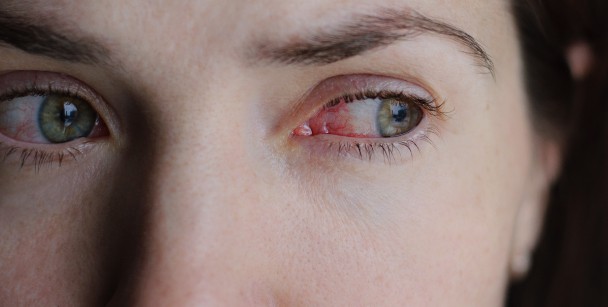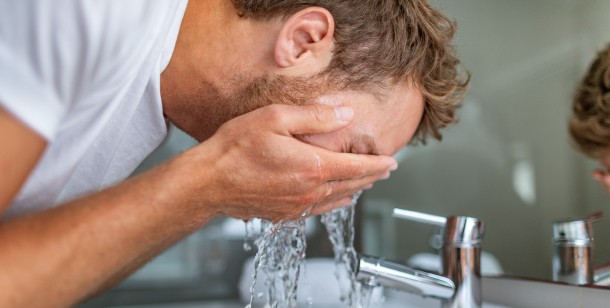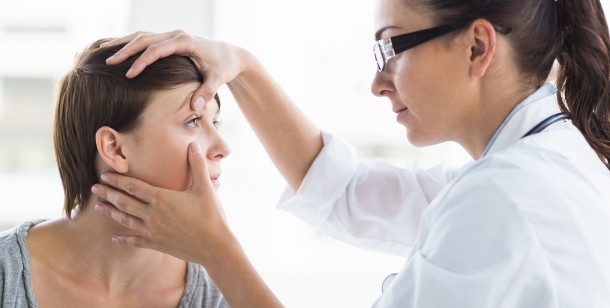It can be worrying to find an unidentified lump or bump anywhere on your body, but this is especially true when it comes to identifying a bump forming under eye. Not only are eye bumps extremely painful, but they may either be harmless or dangerous without much variation in appearance. If you are concerned about a bump on your eye but don’t want to rush to the emergency room unnecessarily, keep reading! We’ve compiled everything you need to know about identifying and treating eye bumps.

What is the Small Bump Under My Eye?
Like many skin conditions, eye bumps and their causes can be difficult to differentiate from one another. And while some issues can give cause for concern, others are simply unsightly or uncomfortable inconveniences. Here are some common types of bumps under the eye:
Milia
- Milia bumps are harmless, small bumps that typically appear on the skin surrounding the eye. Milia bumps are formed by keratin buildup that becomes trapped in the skin; these bumps are usually skin-colored but can be white or yellow-toned as well. Although milia are not the same thing as acne, people who are prone to clogged pores are more likely to develop milia than others. In many cases, milia bumps resolve on their own within a few months, but persistent cases may require treatment. Common courses of treatment for milia include chemical exfoliation of the skin, doctor removal with needle or laser extraction, and cryotherapy.
Stye
- Styes are typically found along the lash line in the form of a small, inflamed, red bump. They are generally caused by a bacterial infection and can become extremely painful. People with blepharitis, rosacea, and seborrheic dermatitis are at an increased risk for developing styes, but anyone can get a stye under their eye. Medical treatment is usually necessary to treat a stye, and surgical intervention may be necessary if it begins affecting your vision. Sleeping in eye makeup or contact lenses may make you more susceptible to styes, so take care to remove these carefully before you go to bed.
Chalazia
- Chalazia tend to look like styes, but these eyelid bumps are not formed by bacteria infections; instead, they are caused by a blocked oil gland—called the meibomian gland—that eventually begins to swell. Unlike styes, chalazia tend to clear up on their own within a few weeks, but especially large or persistent bumps may require medical attention.
Pimples
- Although most bumps along the eye tend to be styes or chalazia bumps, there are some rare cases of acne lesions under the eye, usually appearing in the form of a whitehead. If you wear glasses, you may notice a pimple where the frame rests on your face. You should be careful not to use traditional topical acne treatments around the eye area, as it can be too irritating and cause more problems.
Xanthelasma
- This condition presents in the form of yellow, bumpy patches on the inner corners of your upper eyelid or around your eyes. It is not usually harmful, but it might be an indicator of possible heart disease. Because of this, you should get this checked by a doctor as soon as possible. Certain groups that are at higher risk of developing xanthelasma, including: smokers, obese people, women, high blood pressure sufferers, diabetics, and people of Asian descent.

Common Symptoms of an Eye Bump
If you have an eye bump, you may experience some or all of the following symptoms:
- Tearing
- Irritation
- Blurred vision
- Scratchy feeling in eye
- Discharge/crusty eyelid
- Sensitivity to light
These symptoms are common among many of the aforementioned conditions, so it’s important that you see a doctor to get a definite diagnosis.

How Do I Get Rid of a Bump Forming Under Eye
When treating eye problems at home, it’s important to be gentle so you don’t further exacerbate the eyelid bumps. Before touching your face, wash your hands carefully to make sure that you don’t spread bacteria. If your eye bump is swollen, red, and painful, cleaning the area with warm water and applying warm compresses can help calm down the inflammation. You might also get some relief by gently massaging the affected area. This can help drain the meibomian gland with the bump forming under eye.
When to be Concerned About Eye Bumps
You should see an eye doctor for your eye bump if the pain becomes increasingly worse or if you have trouble seeing. You should also consider seeing a doctor even if you don’t have worsened symptoms but find that your bump does not go away for several weeks.
Visit a Village Emergency Center Today
Village Emergency Centers are a prestigious group of medical facilities in Texas. Designed to provide comprehensive medical care, each location has a board-trained staff to help with all emergency health concerns. Village Emergency Centers have locations across Houston to help you with various medical needs including identifying a bump forming under eye. Visit our website for more information.
